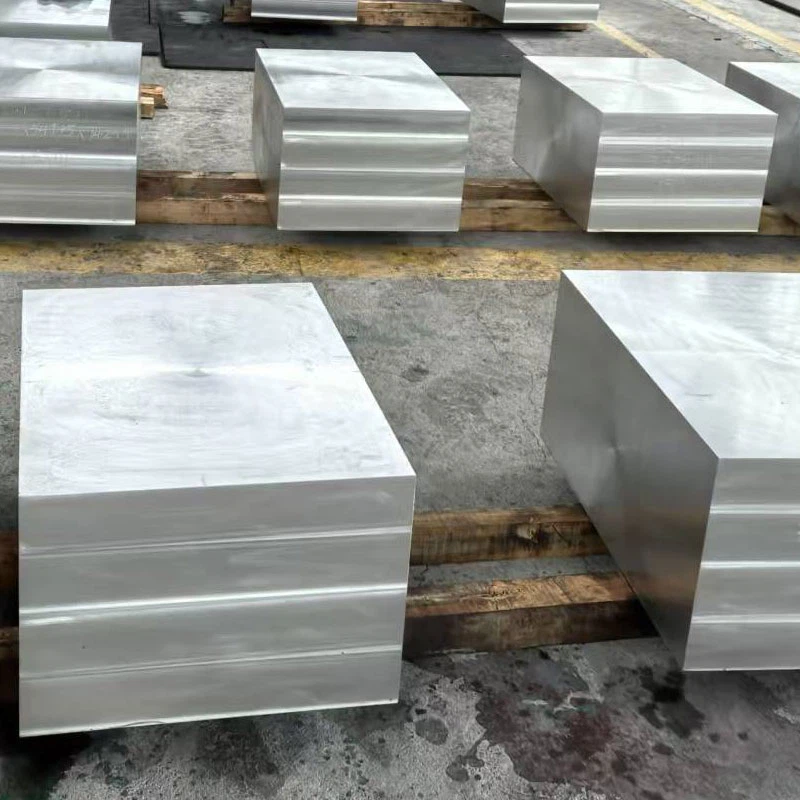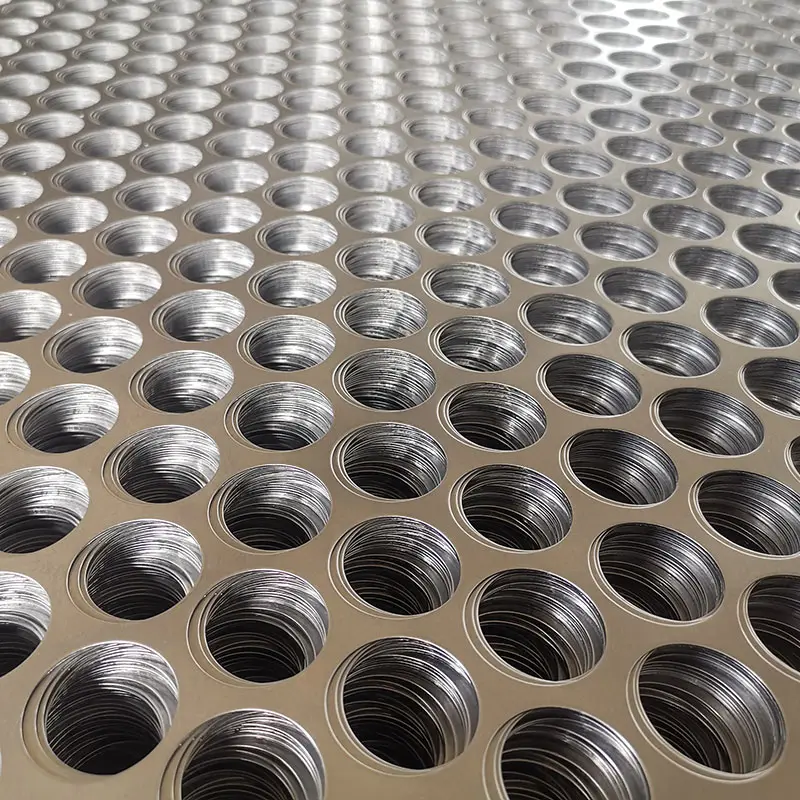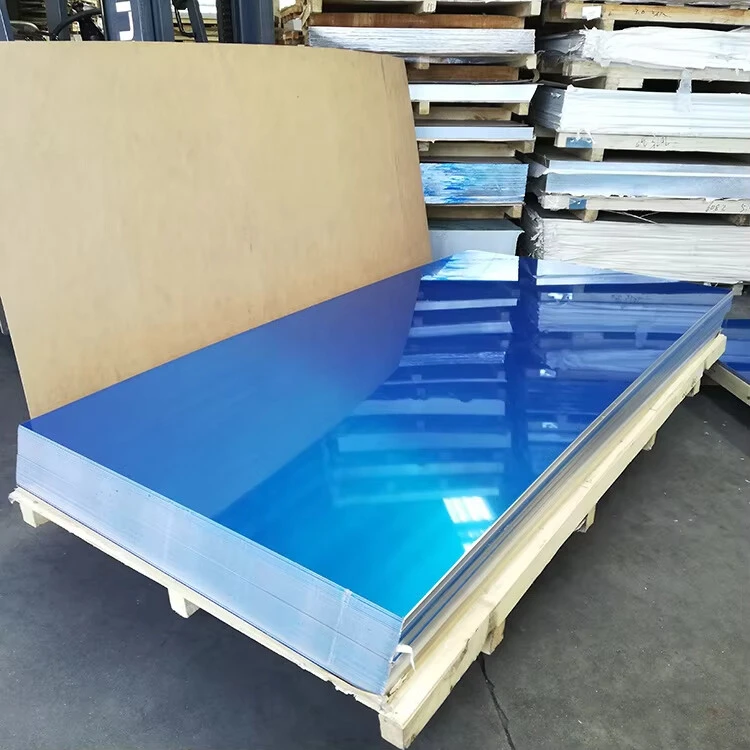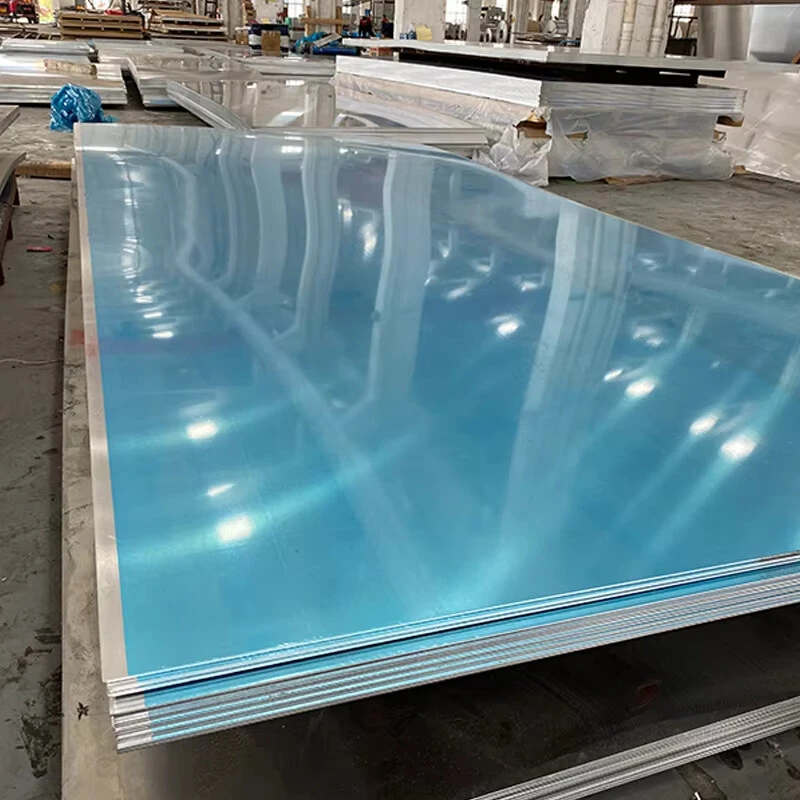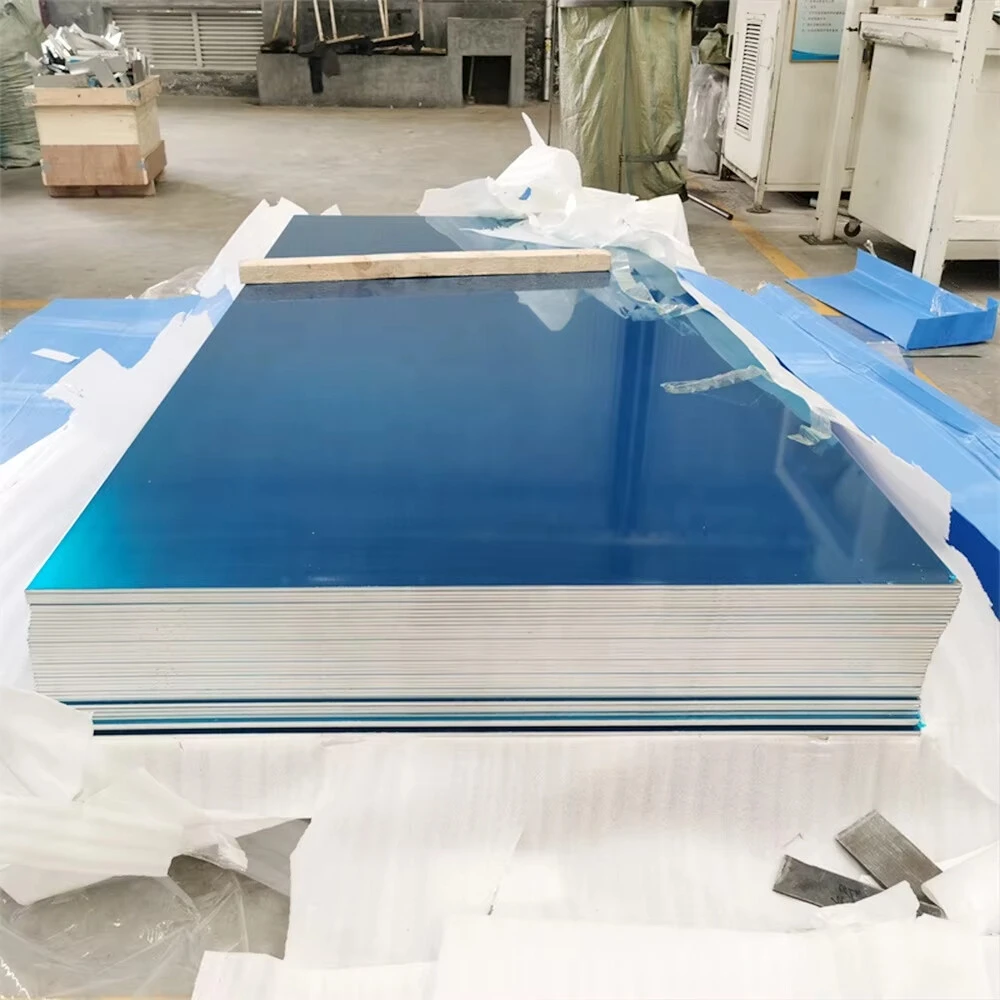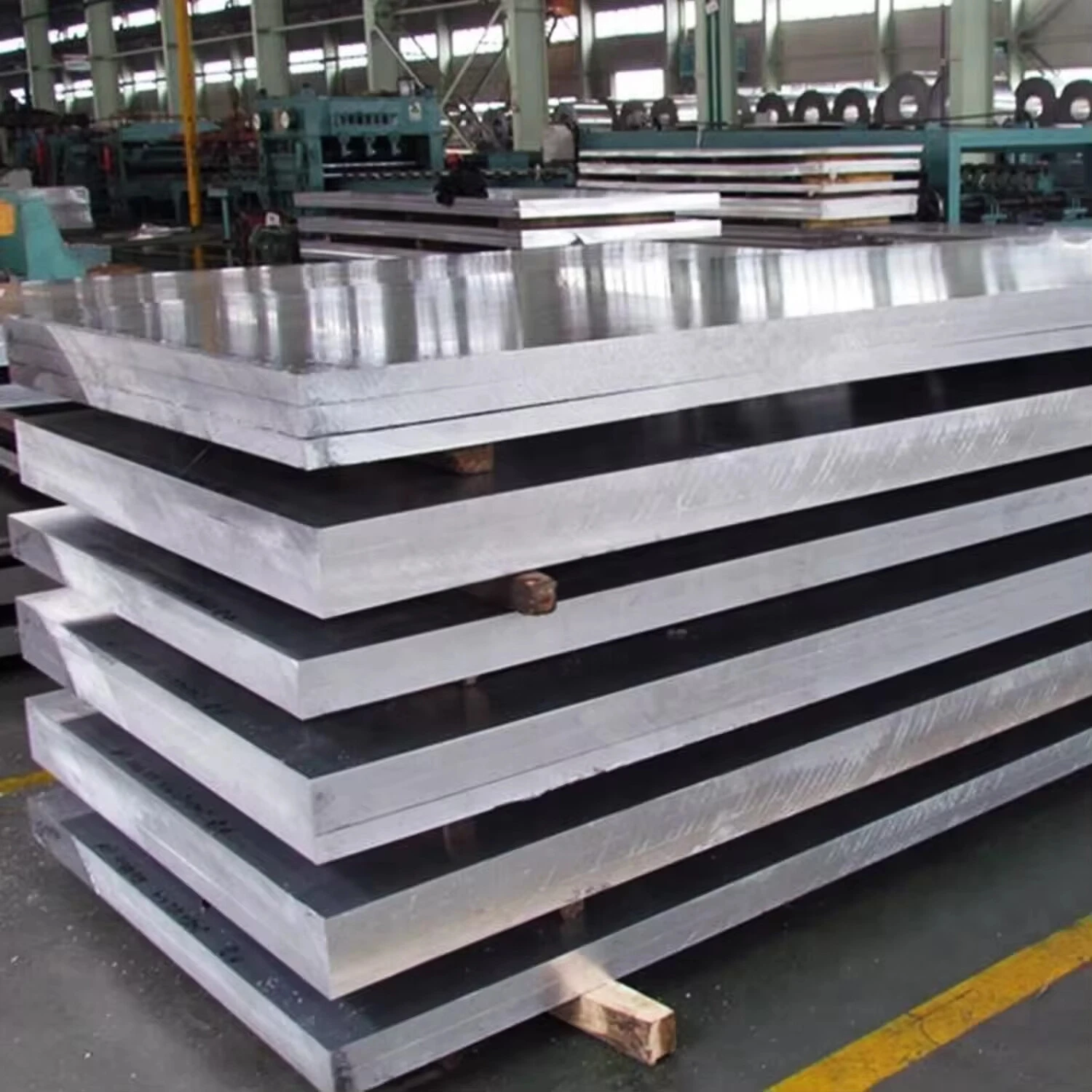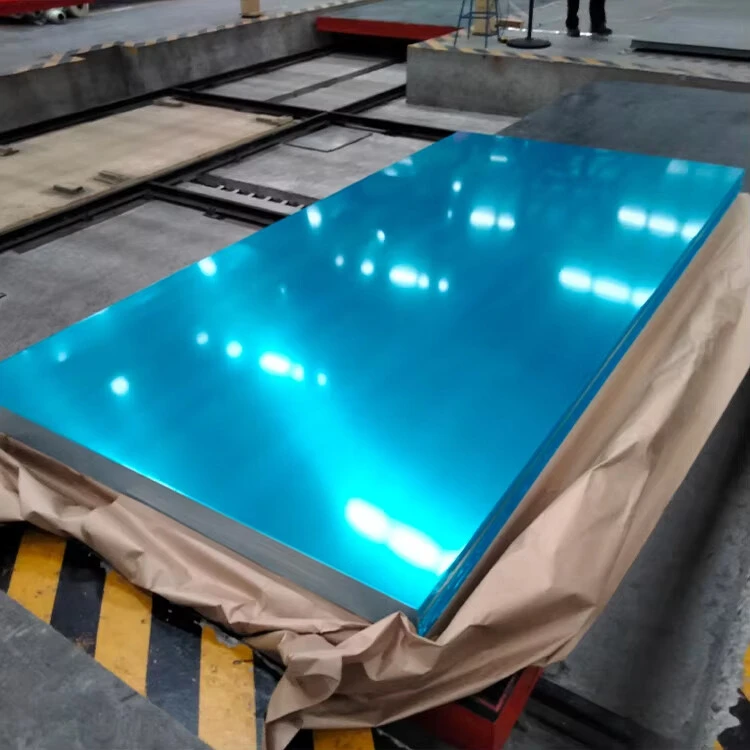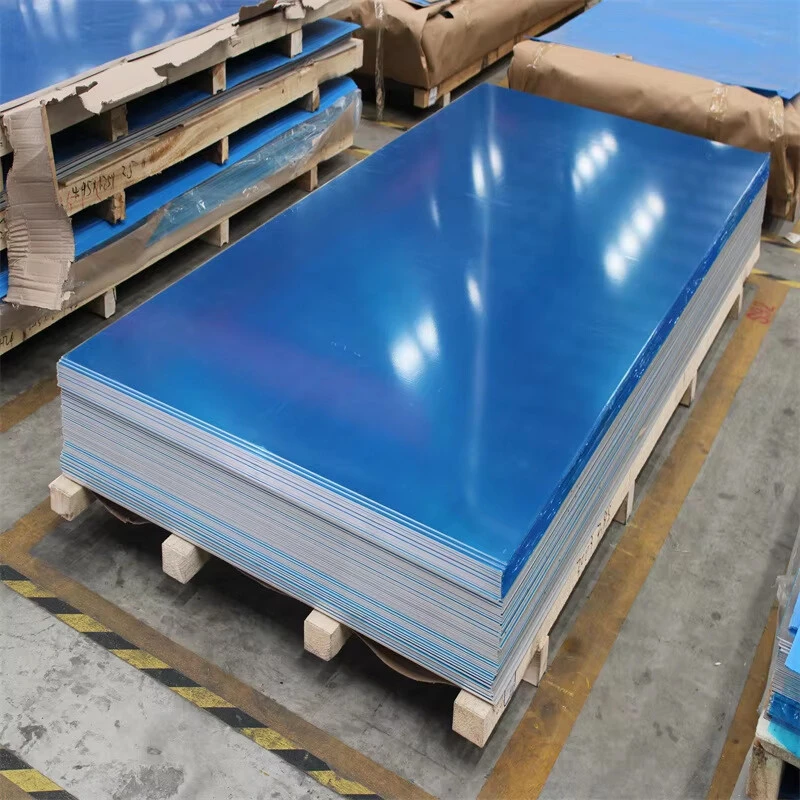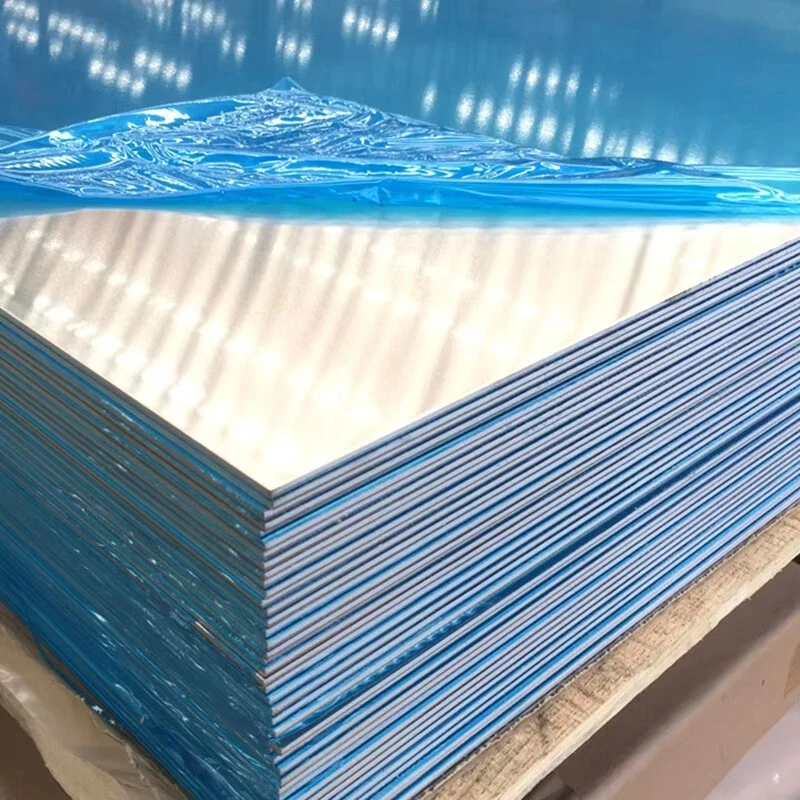1. Material Composition & Manufacturing Process
7050 aluminum alloy (AMS 4050, ASTM B247) represents an advanced aerospace-grade Al-Zn-Mg-Cu alloy engineered for superior damage tolerance and exceptional strength-to-weight ratio. The ultra-hard forged plate variant delivers optimized mechanical properties through precision thermomechanical processing:
Alloy Chemistry:
Zinc (Zn): 5.7-6.7% (primary strengthening element)
Copper (Cu): 2.0-2.6% (precipitation hardening)
Magnesium (Mg): 1.9-2.6% (strengthening precipitates)
Zirconium (Zr): 0.08-0.15% (grain structure control)
Base Material:
Aluminum (Al): ≥87.3% (balance)
Controlled Impurities:
Iron (Fe): ≤0.15% max
Silicon (Si): ≤0.12% max
Manganese (Mn): ≤0.10% max
Titanium (Ti): ≤0.06% max
Chromium (Cr): ≤0.04% max
Premium Forging Production Sequence:
Ingot Casting: Proprietary low-hydrogen, vacuum-degassed process
Homogenization: 470-490°C for 24-36 hours (computer-controlled ramp)
Surface Scalping: Minimum 10mm per surface to eliminate segregation
Pre-forging Preparation: Protective coating application
Multi-directional Forging:
Initial Deformation: 400-425°C
Intermediate Passes: 375-395°C
Final Deformation: 350-370°C
Minimum Deformation Ratio: 4:1
Post-forge Annealing: 413°C for 4-8 hours (stress equalization)
Precision Machining: Surface preparation for heat treatment
Solution Heat Treatment: 475-485°C for thickness-dependent time
Controlled Quenching: High-velocity polymer quench (>100°C/sec)
Cryogenic Treatment: Optional -75°C stabilization (24 hours)
Multi-stage Aging:
T7451: 120°C/8hr + 175°C/8hr
T7651: 120°C/6hr + 165°C/24hr
Full material traceability with digital process monitoring throughout manufacturing.
2. Mechanical Properties Of Ultra-Hard 7050 Forged Plate
| Property | Minimum | Typical | Test Standard | Performance Advantage |
| Ultimate Tensile Strength | 510 MPa | 540-570 MPa | ASTM E8/E8M | 15% higher than 7075-T6 |
| Yield Strength (0.2%) | 455 MPa | 480-510 MPa | ASTM E8/E8M | Superior aerospace loading capacity |
| Elongation (2 inch) | 8% | 10-13% | ASTM E8/E8M | Better damage tolerance than 7075 |
| Fracture Toughness (K₁c) | 30 MPa√m | 33-38 MPa√m | ASTM E399 | 25% improvement over 7075-T6 |
| Shear Strength | 305 MPa | 320-345 MPa | ASTM B769 | Enhanced joint performance |
| Bearing Strength (e/D=2.0) | 785 MPa | 800-850 MPa | ASTM E238 | Exceptional fastener capacity |
| Fatigue Strength (10⁷) | 145 MPa | 160-180 MPa | ASTM E466 | Superior cyclic loading resistance |
| Hardness (Brinell) | 140 HB | 150-165 HB | ASTM E10 | Improved wear resistance |
| Compressive Yield | 470 MPa | 490-520 MPa | ASTM E9 | Critical for compression structures |
Directionality Performance:
L/LT Tensile Strength Ratio: 1.05-1.08
L/ST Tensile Strength Ratio: 1.07-1.12
L/45° Tensile Strength Ratio: 1.02-1.06
Core-to-Surface Property Variation: <5% in thickness up to 150mm
3. Microstructural Engineering for Ultra-Hard Performance
Precision Thermomechanical Control:
Grain Structure Management:
Unrecrystallized, fibrous grain morphology
Controlled pancaking ratio: 5:1 to 8:1
Zr-stabilized substructure retention
Precipitate Engineering:
η’ (MgZn₂) primary strengthening
η (MgZn₂) overaging controlled
T (Al₂Mg₃Zn₃) phase distribution
S (Al₂CuMg) phase minimization
Quench Rate Control:
Critical cooling rate: >100°C/sec at surface
Core cooling rate: >60°C/sec minimum
Residual stress minimization through polymer quenchant
Multi-stage Aging Kinetics:
Nucleation stage: 120°C/6-8hr (GP zone formation)
Growth stage: 165-175°C/8-24hr (η’ precipitation)
Microstructural Characteristics:
Grain Size: ASTM 8-10 (15-30μm)
Dispersoid Size: 50-100nm (Al₃Zr)
Precipitate Density: >10^17/cm³
Recrystallized Fraction: <5% maximum
Texture: Strong brass {011}<211> component
Inclusion Rating: ≤0.3 per ASTM E45
Void Content: <0.1% volumetric
4. Dimensional Specifications & Tolerances
| Parameter | Standard Range | Aerospace Tolerance | Commercial Tolerance |
| Thickness | 20-250 mm | ±0.5mm or ±1%* | ±1.5mm or ±2%* |
| Width | 1000-2500 mm | ±2 mm | ±5 mm |
| Length | 2000-10000 mm | +10/-0 mm | +20/-0 mm |
| Flatness | N/A | 0.1% of length | 0.2% of length |
| Surface Roughness | N/A | 3.2 μm Ra max | 6.3 μm Ra max |
| Edge Straightness | N/A | 1 mm per meter | 3 mm per meter |
| Parallelism | N/A | 0.5% of thickness | 1.0% of thickness |
*Whichever is greater
Special Processing Options:
Near Net Shape Forging: Reduced machining allowance
Contour Pre-machining: 15mm minimum stock allowance
Stress Relief: Pre-machining stress equalization
Ultrasonic Inspection: 100% volumetric testing per AMS 2154
Density: 2.83 g/cm³ (±0.02)
Weight Formula: Thickness(mm) × Width(m) × Length(m) × 2.83 = Weight(kg)
5. Heat Treatment & Performance Optimization
| Temper Designation | Process Details | Optimized Properties | Target Applications |
| T7451 | Solution heat treat, controlled stretch (1.5-3%), stress relief, overaged | Best SCC resistance with high strength | Primary aircraft structures |
| T7651 | Solution heat treat, controlled stretch (1.5-3%), overaged (higher peak temperature) | Maximum strength with good SCC resistance | Critical load-bearing components |
| T7351 | Solution heat treat, stress relief by stretching, specially overaged | Optimal combination of strength/fracture toughness | Fatigue-critical structures |
| T74 | Solution heat treat, multi-stage overaging | Maximum SCC resistance | Marine/naval aerospace applications |
Heat Treatment Parameters:
Solution Temperature: 475-485°C
Soak Time: 1 hour per 25mm thickness (minimum)
Quench Delay: <10 seconds maximum
Quench Medium: Polymer concentration 12-18%
Quench Velocity: 3-5 m/sec minimum
Aging Temperature Control: ±3°C tolerance
Post-quench Storage: <8 hours at <20°C before aging
Material Response Characteristics:
Natural Aging: Significant property changes within 48 hours
Artificial Aging: 90% of properties developed in first aging stage
Thermal Stability: Maintains >95% of properties at 100°C
Cryogenic Performance: Increased strength at subzero temperatures
Stress Relief: 2-3% permanent deformation recommended
6. Machinability & Manufacturing Considerations
| Operation | Tool Material | Recommended Parameters | Special Considerations |
| High-Speed Milling | Premium carbide | Vc=500-1000 m/min, fz=0.1-0.25 mm | Climb milling essential |
| Deep Hole Drilling | Carbide coolant-fed | Vc=80-150 m/min, fn=0.15-0.35 mm/rev | Pecking cycle required |
| Turning | PCD/CBN inserts | Vc=600-1200 m/min | Sharp cutting edges vital |
| Threading | Premium HSS-E-PM | Vc=15-25 m/min | Thread rolling preferred |
| Reaming | Carbide reamers | Vc=40-70 m/min | H7 tolerance achievable |
| EDM | Copper electrodes | Low current settings | Recast layer removal required |
Machining Optimization Strategies:
Cutting Fluids: Water-soluble coolants (pH 8.5-9.5)
Tool Coatings: TiAlN or Diamond preferred
Chip Management: High-pressure (70+ bar) coolant
Clamping Force: Moderate (avoid distortion)
Feeds/Speeds: High speed, moderate feed approach
Tool Engagement: Maximum 60% of cutter diameter
Roughing Strategy: High-efficiency machining (HEM)
Finishing: Light cuts with high surface speed
7. Corrosion Resistance & Protection Systems
| Environment Type | Resistance Rating | Protection Method | Performance Expectation |
| Industrial Atmosphere | Moderate | Anodizing + primer/topcoat | 10+ years with maintenance |
| Marine Environment | Poor-Fair | Anodizing + chromated primer + topcoat | 5-8 years with maintenance |
| High-Humidity | Fair | Anodizing Type II or III | 3-5 years without topcoat |
| Chemical Exposure | Fair | Chemical conversion + sealed anodize | Application dependent |
| Stress Corrosion | Good (T7 tempers) | Overaging + surface compression | Significant improvement over 7075 |
| Exfoliation | Good (T7 tempers) | Proper heat treatment | EXCO rating of EA or better |
Surface Treatment Options:
Anodizing:
Type II (Sulfuric): 10-25μm
Type III (Hard): 25-75μm
Thin Film Sulfuric: 3-8μm
Tartaric-Sulfuric: 5-15μm
Conversion Coatings:
Chromate per MIL-DTL-5541 Class 1A
Trivalent chromium pretreatment
Sol-gel technology
Paint Systems:
High-solids epoxy primer
Polyurethane topcoat
Rain erosion coatings
Specialty anti-corrosion primers
Mechanical Surface Enhancement:
Shot peening (0.008-0.012A intensity)
Laser shock peening
Burnishing
8. Physical Properties for Engineering Design
| Property | Value | Design Significance |
| Density | 2.83 g/cm³ | Weight-critical structures |
| Melting Range | 490-630°C | Welding/heat treatment limitations |
| Thermal Conductivity | 153-167 W/m·K | Heat dissipation capability |
| Electrical Conductivity | 35-40% IACS | EMI shielding applications |
| Specific Heat | 860 J/kg·K | Thermal mass calculations |
| Thermal Expansion (CTE) | 23.5 ×10⁻⁶/K | Thermal stress prediction |
| Young’s Modulus | 71.7 GPa | Structural stiffness |
| Poisson’s Ratio | 0.33 | Elasticity modeling |
| Fatigue Crack Growth Rate | da/dN = 3×10⁻⁹(ΔK)³·⁵ | Damage tolerance design |
| Fracture Energy (G₁c) | 28-32 kJ/m² | Impact resistance assessment |
9. Quality Assurance & Testing Protocolsption
Mandatory Inspection Regime:
Chemical Composition:
Optical emission spectroscopy
Verification of all major elements and impurities
Mechanical Testing:
Full tensile test (L, LT, ST directions)
K₁c fracture toughness testing
Hardness survey (25mm grid minimum)
Non-Destructive Testing:
Ultrasonic inspection per AMS-STD-2154 Class A
Penetrant inspection of critical surfaces
Eddy current testing (optional)
Microstructural Analysis:
Grain size and morphology
Recrystallization assessment
Inclusion rating per ASTM E45
Production Testing:
Heat treatment parameters verification
Quench sensitivity testing
Electrical conductivity mapping
Certification Documentation:
Material Test Report (MTR) per EN 10204 3.1/3.2
Chemical analysis certification
Mechanical properties certification
Heat treatment chart records
NDT reports with acceptance criteria
Temper verification documentation
Process control parameters
Statistical process data summary
Lot traceability information
10. Applications & Performance Advantages
Primary Aerospace Applications:
Bulkhead structures
Wing spars and carry-through structures
Landing gear components
Fuselage frames and longerons
Thick section structural members
Upper wing skins
High-load fittings
Missile structures
Structural backup hardware
Critical connection fittings
Performance Advantages vs. 7075:
10-15% higher tensile strength
20-25% improved fracture toughness
Superior stress corrosion resistance
Enhanced exfoliation corrosion resistance
Better fatigue crack growth resistance
Improved damage tolerance
Higher residual strength after impact
Better thermal stability
Superior machinability in thick sections
Enhanced through-thickness properties
11. Storage & Handling RequirementsProducts Description
Material Handling Protocol:
Storage Environment:
Temperature: 15-25°C
Humidity: <65% RH
Protection from precipitation
Isolation from steel products
Lifting Guidelines:
Multi-point lifting with spreader bars
Non-metallic slings

